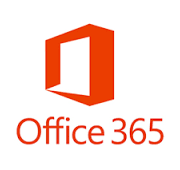SMBs Benefit from Office 365 Business Premium Enhancements
Office 365 Business Premium is a comprehensive productivity suite designed to help businesses streamline their operations and increase their efficiency. This cloud-based infrastructure service from Microsoft offers a range of powerful tools and applications that can help teams collaborate, communicate, and work more effectively. With features like email hosting, file sharing, online meetings, and more, Office 365 Business Premium is an all-in-one solution that can help businesses of all sizes improve their productivity and achieve their goals. In this era of remote work and digital communication, Office 365 Business Premium is a valuable asset for any business looking to stay ahead of the curve as they improve their managed cloud services.
Key Benefits of Business Premium Office 365
There are several benefits of using Microsoft Office 365 Business Premium for your business. Here are some of the key advantages:
- Cloud-based productivity: With Office 365 Business Premium, your team can access their files, emails, and other applications from anywhere with an internet connection. This allows for greater flexibility and remote working capabilities, which is increasingly important in today’s digital world.
- Collaboration and teamwork: Office 365 Business Premium includes a suite of powerful tools for collaboration and teamwork, such as Microsoft Teams, SharePoint, and OneDrive. These tools enable your team to work together on documents and projects in real-time, regardless of their location.
- Scalability and cost-effectiveness: Office 365 Business Premium is a subscription-based service that can be scaled up or down as needed, allowing businesses to easily adjust their plans based on their changing needs. Additionally, Office 365 Business Premium can help businesses save money by reducing the need for on-premises infrastructure and software.
- Security and compliance: Microsoft takes security seriously, and Office 365 Business Premium includes a range of security and compliance features, such as data encryption, multi-factor authentication, and advanced threat protection. These features help protect your business from cyber threats and ensure compliance with data protection regulations.
- Constantly updated: Office 365 Business Premium is a constantly evolving platform, with new features and updates being added on a regular basis. This ensures that your business always has access to the latest tools and technologies, and that you can stay ahead of the competition.
New and Existing Enhancements to Office 365 Business Premium
One of the value propositions we see with Microsoft Office 365 is the aggressive manner in which Microsoft continues to add services, features, and apps to the service without changing price.
Recently, Microsoft announced the addition of two new capabilities to the Business Premium license:
Outlook Customer Manager
A simple CRM tool for small businesses, Outlook Customer Manager lets you track your customers, contacts, sales activities, and important events from your Inbox.
Microsoft Bookings
Microsoft Bookings offers convenient, flexible online options that make it quick and easy for customers to schedule appointments with your small business clients. A customizable public webpage allows customers to find available times and book appointments, anytime. A private calendar enables your small business clients and staff to manage their schedules; automatic confirmations and reminders help to save time.


 Should your CRM, ERP, or Warehousing system guide which email service you use? Yes, and here’s why …
Should your CRM, ERP, or Warehousing system guide which email service you use? Yes, and here’s why …